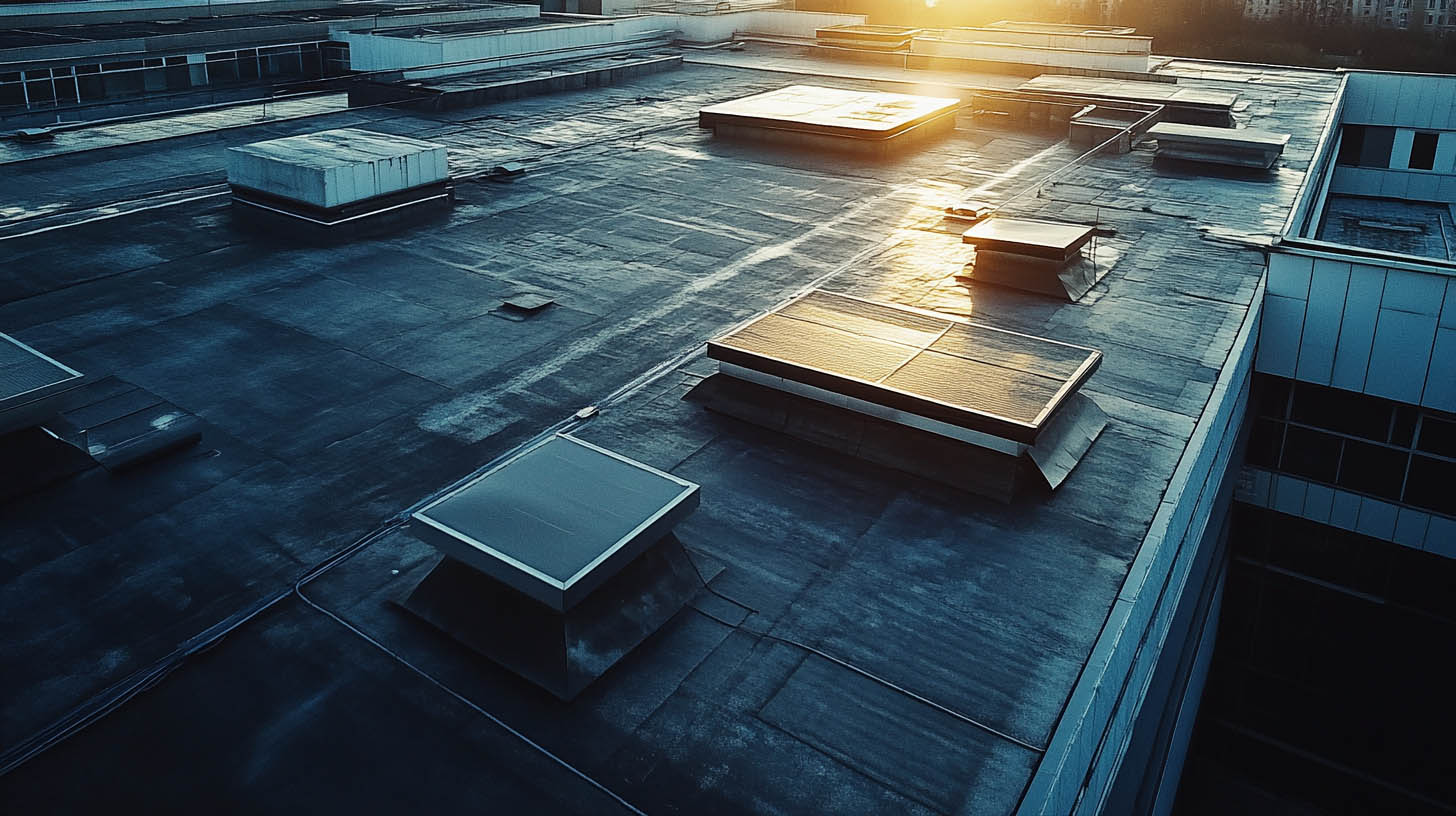
Rainstoppers Roofing provides businesses with reliable flat roofing solutions designed to meet unique commercial demands. Choosing the right material ensures durability, energy efficiency, and cost-effectiveness while protecting your property for years to come.
Why Flat Roofs Are Popular for Commercial Buildings
Flat roofing systems are ideal for commercial spaces due to their affordability, ease of maintenance, and multi-functional design. They offer space for HVAC systems, solar panels, and rooftop utilities, making them practical for business operations. Flat roofs are also more cost-efficient than steep-sloped options.
Types of Flat Roofing Systems
1. TPO Roofing: Durable and Energy-Efficient
Thermoplastic Olefin (TPO) is a single-ply membrane popular for its durability and energy-saving properties.
- Energy Efficiency: Reflective surfaces reduce cooling costs.
- Longevity: Resistant to UV rays, chemicals, and punctures.
- Cost-Effective: Affordable installation and minimal maintenance needs.
TPO roofs are ideal for businesses seeking sustainability and reduced energy bills.
2. EPDM Roofing: Flexible and Budget-Friendly
EPDM (Ethylene Propylene Diene Monomer) is a synthetic rubber membrane known for its flexibility and strength.
- Durability: Resistant to extreme temperatures and UV rays.
- Ease of Repair: Low-cost repairs with long-term benefits.
- Installation Options: Fully adhered or mechanically fastened systems.
3. PVC Roofing: Strong and Chemical-Resistant
Polyvinyl Chloride (PVC) is a top choice for buildings needing high resistance to chemicals or fire hazards.
- Fire Resistance: PVC has excellent flame-retardant properties.
- Strength: Superior tear and puncture resistance.
- Chemical Protection: Ideal for industries handling corrosive materials.
Unique Fact: PVC roofing systems can last up to 30 years with proper maintenance, making them a long-term solution for commercial properties.
4. Modified Bitumen Roofing: Reliable and Weather-Resistant
Modified bitumen combines asphalt with polymers for improved durability and flexibility. It is especially suitable for areas with fluctuating weather conditions.
- SBS Systems: Flexible and ideal for cold climates.
- APP Systems: Superior UV and tear resistance.
5. Built-Up Roofing (BUR): Layered Protection
Built-up roofing has been a trusted option for over a century. Its multi-layer design makes it one of the most durable flat roofing systems.
- Weather Resistance: Multiple layers protect against leaks.
- Energy Efficiency: Offers insulation, reducing energy costs.
- Durability: Withstands foot traffic and environmental stress.
Key Considerations for Flat Roof Selection
Durability and Climate
Choose a material that aligns with the climate. For example, TPO and PVC are great for hot areas, while modified bitumen excels in colder regions.
Budget Constraints
For businesses on a budget, EPDM and BUR systems are cost-effective choices. However, investing in quality roofing materials minimizes long-term expenses for repairs and replacements.
Energy Efficiency
Reflective options like TPO and PVC reduce cooling expenses, offering businesses savings year-round.
Maintenance for Long-Term Success
Proper maintenance ensures the longevity and efficiency of your flat roof:
- Regular Inspections: Check for cracks, pooling water, or seam separation.
- Debris Removal: Clear leaves, dirt, and other debris to prevent water damage.
- Prompt Repairs: Address minor damage before it escalates into costly repairs.
Preventive maintenance can add 10–15 years to the lifespan of a flat roof.
Advantages of Investing in Professional Roofing Services
Partnering with certified contractors ensures:
- Proper installation to prevent leaks.
- Use of high-quality materials for long-term performance.
- Comprehensive warranties for peace of mind.
Rainstoppers Roofing in Charleston, WV, offers 5-year warranties and ensures top-notch services through certified professionals like GAF Master Elite contractors.
FAQs
1. What is the most cost-effective flat roofing material?
EPDM and BUR systems are budget-friendly while providing durability.
2. How long do flat roofs last?
TPO and PVC roofs can last up to 30 years, while BUR systems may last 20–25 years with proper maintenance.
3. How often should flat roofs be inspected?
Schedule inspections at least twice a year and after major storms.
4. Are flat roofs suitable for heavy rain or snow?
Yes, when installed properly with effective drainage systems, flat roofs can handle heavy precipitation.
5. What’s the best flat roof option for energy efficiency?
TPO and PVC systems are the most energy-efficient due to their reflective properties.
Conclusion
Choosing the right flat roofing system ensures durability, energy efficiency, and long-term cost savings for your commercial property. Options like TPO, PVC, EPDM, and modified bitumen provide unique benefits tailored to different needs and climates. With regular maintenance and professional installation, a quality flat roof will protect your business for decades.
If you want to read a blog about boosting roof longevity with regular inspections, click here.
